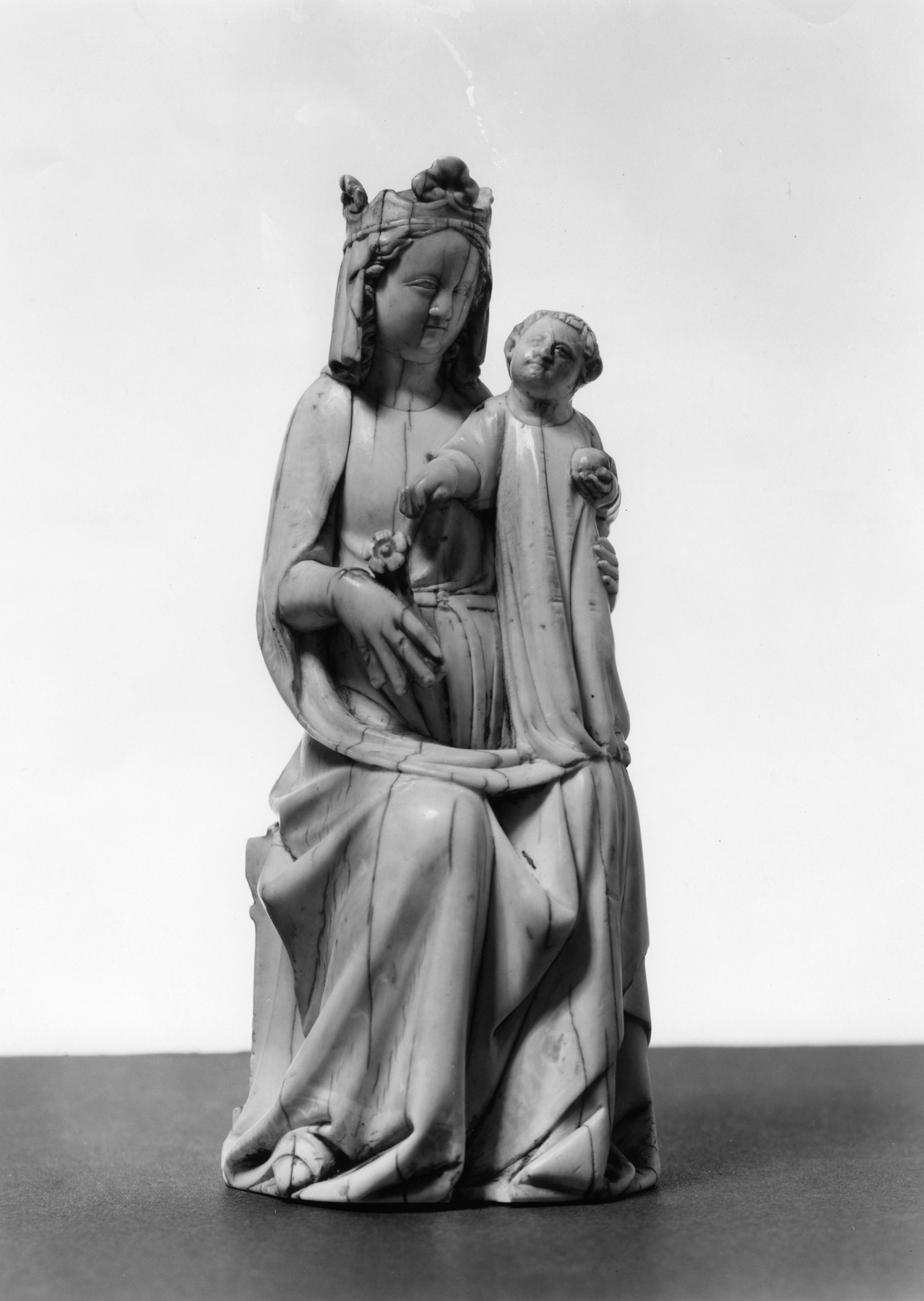Virgin and Child
(Medieval Europe )
The seated Virgin is crowned and holds a flower in her right hand. The standing Christ Child, who looks up at the spectator, reaches for the flower with his right hand. In his left hand he holds an apple.
The sturdy quality of the figures and the facial type recall the stone sculpture of Lorraine, but it is possible that the ivory is a Parisian work with Lorraine overtones.
The silhouettes left by the polychromed decoration include a floral border on the Virgin's skirt and a design of large flowering branches across the back of the robe. The rear of the throne is decorated with two tall, elegant trefoil arches, which were stained or painted and had a gilt outline, now in white silhouette. The flower is a restoration.
Provenance
Provenance (from the French provenir, 'to come from/forth') is the chronology of the ownership, custody, or location of a historical object. Learn more about provenance at the Walters.
L. Cotteraeu, Paris, prior to 1900, by purchase; Henri Daguerre, Paris [date of acquisition unknown], by purchase; Henry Walters, Baltimore, 1922, by purchase; Walters Art Museum, 1931, by bequest.
Exhibitions
| 2001-2002 | Realms of Faith: Medieval and Byzantine Art from the Walters Art Museum. Frist Center for the Visual Arts, Nashville. |
| 1984-1985 | Illuminated Manuscripts: Masterpieces in Miniature. The Walters Art Gallery, Baltimore. |
Geographies
France, Lorraine (Place of Origin)
Measurements
H: 7 1/16 x W: 3 in. (18 x 7.6 cm)
Credit Line
Acquired by Henry Walters, 1922
Location in Museum
Not on view
Accession Number
In libraries, galleries, museums, and archives, an accession number is a unique identifier assigned to each object in the collection.
In libraries, galleries, museums, and archives, an accession number is a unique identifier assigned to each object in the collection.
71.491




